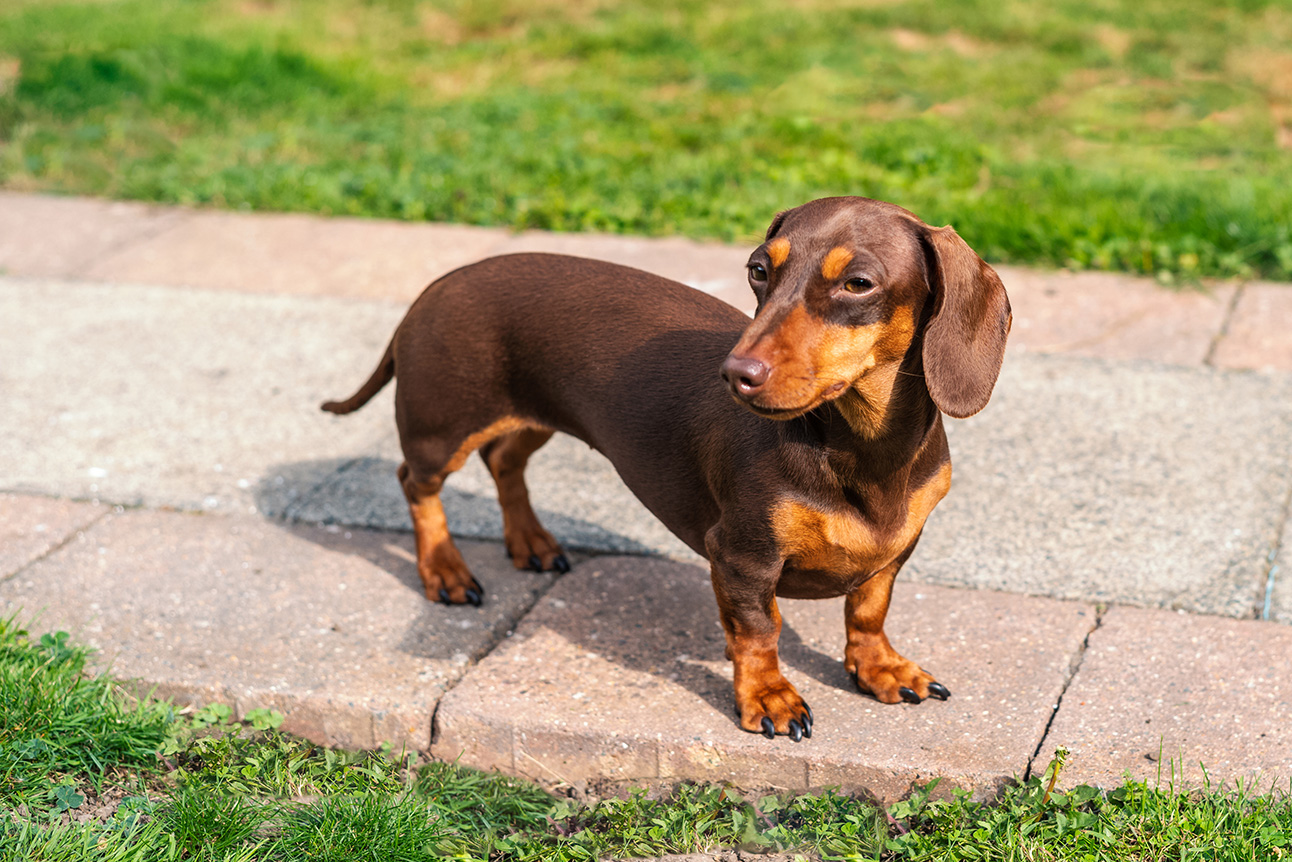Miniature Dachshund

Description
The Miniature Dachshund is a small and spirited breed known for its distinctive long body, short legs, and bold personality. A smaller version of the standard Dachshund, the Miniature typically weighs 11 pounds or less and stands about 5 to 6 inches tall at the shoulder. This breed retains the playful and courageous demeanor of its larger counterpart, making it a delightful companion for those who appreciate a big personality in a small package.
Miniature Dachshunds come in a variety of coat types: smooth, longhaired, and wirehaired, each with its own unique charm. Their coats can be found in a wide range of colors and patterns, including solid red, black and tan, chocolate, dapple, and piebald. Regardless of coat type or color, the Miniature Dachshund's most defining feature is its elongated body, which was originally developed to aid in hunting burrowing animals such as rabbits and badgers.
Despite their hunting origins, Miniature Dachshunds are beloved as affectionate and loyal family pets. They form strong bonds with their owners and thrive on attention and companionship. Their playful and curious nature makes them excellent for interactive games, and they enjoy short walks and outdoor exploration. However, their independent streak and occasional stubbornness can pose a challenge during training, requiring patience and consistent positive reinforcement.
The Miniature Dachshund's small size and adaptable temperament make it suitable for a variety of living environments, from apartments to larger homes with yards. While they are generally good with children and other pets, their hunting instincts may cause them to chase smaller animals. Early socialization and training can help them become well-rounded and confident companions.
With their unique appearance, lively personality, and deep devotion to their families, Miniature Dachshunds have captured the hearts of dog lovers worldwide. Their combination of charm, intelligence, and adaptability makes them a popular choice for individuals and families seeking a small yet spirited companion.
History
The history of the Miniature Dachshund is deeply intertwined with that of its larger counterpart, the Standard Dachshund, a breed with origins tracing back to 15th-century Germany. The name "Dachshund," which translates to "badger dog" in German, reflects the breed’s original purpose as a fearless hunter of badgers and other burrowing animals. While the Standard Dachshund was developed for hunting larger prey, the Miniature Dachshund was bred to hunt smaller game, such as rabbits, and to serve as a versatile hunting companion for German farmers and foresters.
The Miniature Dachshund emerged in the 19th century through selective breeding. Standard Dachshunds were paired with smaller dogs, such as Pinschers or toy terriers, to produce a smaller version that retained the hunting prowess, elongated body, and courageous temperament of the original breed. This smaller size allowed Miniature Dachshunds to navigate smaller burrows and tackle prey that required a more delicate yet determined approach. Despite their smaller stature, Miniature Dachshunds retained their bold and fearless nature, making them highly effective in their roles.
By the late 19th and early 20th centuries, Dachshunds, including the Miniature variety, began to gain popularity as companion animals outside of Germany. Their charming appearance and engaging personalities made them a favorite among European and American households. The breed was introduced to the United States in the early 1900s, and both Standard and Miniature Dachshunds were officially recognized by the American Kennel Club (AKC) in 1885.
During the World Wars, the breed faced a decline in popularity due to its German origins. However, dedicated breeders and enthusiasts worked to preserve the Dachshund’s lineage, and its reputation rebounded in the postwar years. The Miniature Dachshund’s adaptability, loyalty, and unique appearance have solidified its place as a beloved breed worldwide.
Today, the Miniature Dachshund is celebrated for its rich history, versatility, and vibrant personality. Its evolution from a specialized hunting dog to a cherished companion highlights its enduring appeal and adaptability across centuries and cultures.
Colors
• Black
• Black & Cream
• Black & Tan
• Blue
• Blue & Cream
• Blue & Tan
• Chocolate
• Chocolate & Cream
• Chocolate & Tan
• Cream
• Fawn
• Fawn & Cream
• Fawn & Tan
• Gray
• Isabella
• Red
• Wheaton
• Wild Boar


